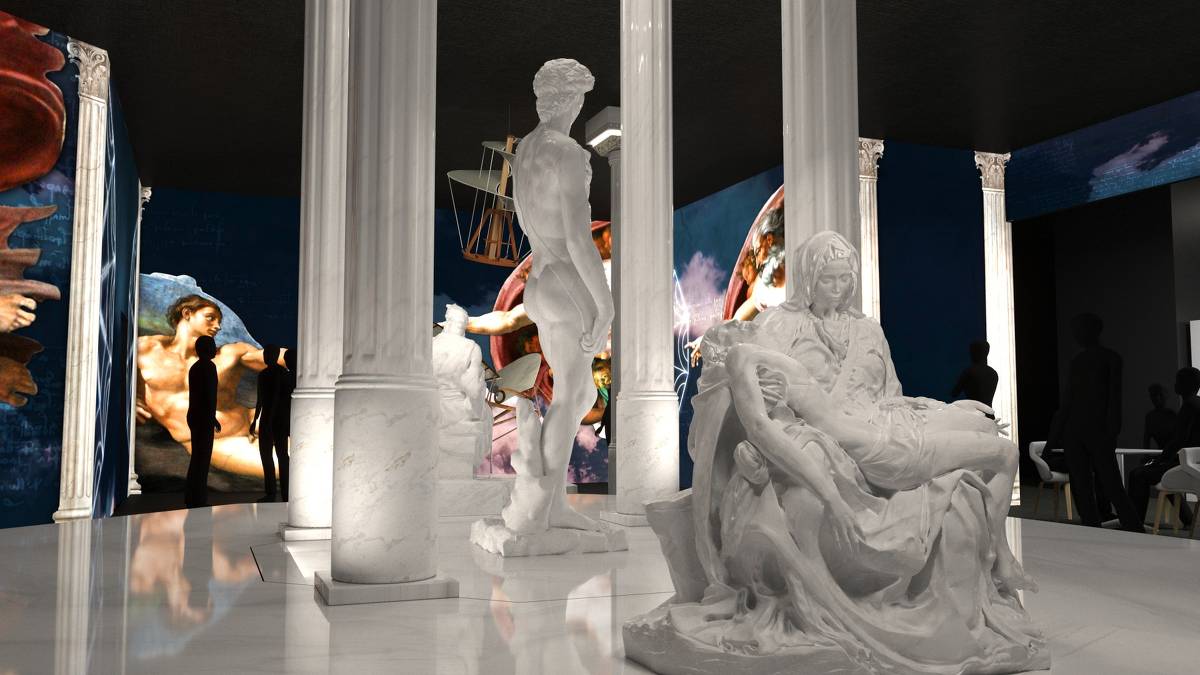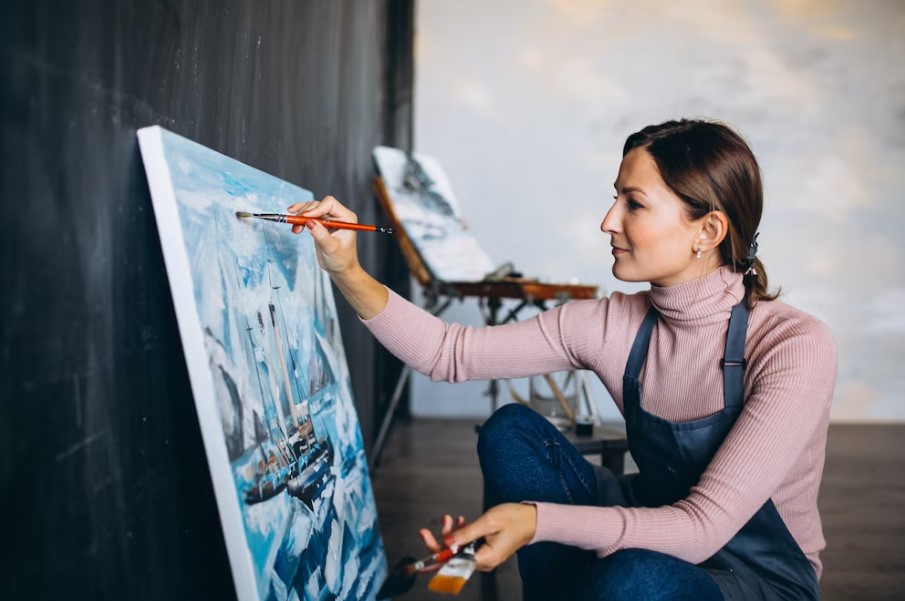Miniature ceramics and ivory accents transform ordinary spaces into curated sanctuaries of refined taste, offering collectors and design enthusiasts a unique pathway to sophisticated interior styling.
The Timeless Allure of Miniature Decorative Arts 🏺
For centuries, miniature ceramics and ivory pieces have captivated collectors and interior designers alike. These diminutive treasures carry an outsized impact, proving that exceptional design doesn’t require monumental scale. From ancient civilizations to contemporary design studios, the craftsmanship behind these tiny wonders reflects humanity’s enduring appreciation for detail, precision, and artistic excellence.
The beauty of miniature decorative objects lies in their ability to command attention without overwhelming a space. A carefully selected ceramic figurine or an intricately carved ivory accent can become the focal point of a curated shelf, mantelpiece, or display cabinet. These pieces invite closer inspection, rewarding observers with details that might be missed on larger-scale works.
Today’s interior design landscape increasingly values personalization and meaningful collections over mass-produced decor. Miniature ceramics and ivory accents perfectly align with this philosophy, offering homeowners opportunities to express individual taste while maintaining spatial harmony. Whether your aesthetic leans toward minimalist modernism, bohemian eclecticism, or traditional elegance, these tiny treasures adapt beautifully to diverse design vocabularies.
Understanding the Artistic Heritage Behind Miniature Ceramics ✨
Ceramic miniatures represent a venerable tradition spanning cultures and centuries. Chinese artisans perfected miniature porcelain techniques during the Ming Dynasty, creating snuff bottles and scholar’s desk objects that remain highly prized today. European manufacturers like Meissen and Royal Copenhagen elevated miniature ceramic production to high art during the 18th and 19th centuries, producing collectible figurines that continue to enchant contemporary audiences.
The technical challenges of working at miniature scale demand exceptional skill. Ceramic artists must master temperature control, glaze chemistry, and hand-painting techniques that become exponentially more difficult as size decreases. A single miniature piece may require multiple firings, meticulous color application, and finishing touches that test the limits of human dexterity and patience.
Contemporary ceramic artists continue innovating within this tradition, creating miniature works that bridge historical techniques with modern aesthetics. Studio potters produce limited-edition miniatures that function as wearable art, decorative accents, or standalone sculptural pieces. These contemporary interpretations honor traditional craftsmanship while exploring new forms, textures, and conceptual frameworks.
Regional Ceramic Traditions Worth Exploring
Different regions have developed distinctive miniature ceramic styles that reflect local materials, cultural values, and aesthetic preferences. Japanese Netsuke, though often carved from ivory or wood, inspired ceramic versions that capture the same playful, detailed spirit. Delftware miniatures from the Netherlands showcase characteristic blue-and-white patterns on a diminutive scale, perfect for creating cohesive collections.
Mexican Talavera pottery includes charming miniatures that bring vibrant color and folk art sensibility to contemporary interiors. These hand-painted pieces inject personality and cultural richness into spaces, serving as conversation starters and visual anchors. Portuguese ceramics offer another distinct aesthetic, with miniatures featuring intricate hand-painted details that celebrate maritime heritage and regional flora.
The Sophisticated World of Ivory Accents 🦣
When discussing ivory accents in contemporary design, it’s essential to address ethical considerations immediately. Modern interior design emphasizes antique ivory pieces with proper documentation or, increasingly, high-quality alternatives that replicate ivory’s aesthetic appeal without ethical concerns. Fossilized ivory, tagua nut (vegetable ivory), bone, and advanced synthetic materials now provide responsible options for those drawn to ivory’s distinctive appearance.
Historically, ivory represented the pinnacle of luxury craftsmanship. Artisans carved intricate miniatures—from Japanese netsuke to European chess pieces—that demonstrated technical mastery and artistic vision. These antique pieces, when ethically sourced and documented, represent important cultural artifacts that connect us to artistic traditions spanning millennia.
The distinctive warm tone and smooth texture of ivory (or ivory alternatives) complement various design schemes. These materials possess natural variations that ensure each piece remains unique, adding authenticity and character to curated displays. The subtle aging of antique ivory tells stories of time and use, imbuing objects with historical resonance that newly manufactured items cannot replicate.
Ethical Alternatives That Honor Traditional Aesthetics
Contemporary designers and collectors have embraced responsible alternatives that preserve ivory’s visual appeal while respecting wildlife conservation. Tagua nut, harvested from South American palm trees, carves remarkably like animal ivory and develops a similar patina over time. Fossilized mammoth ivory, recovered from permafrost, offers genuine ivory for those seeking authentic material without contemporary ethical concerns.
Advanced resin composites now replicate ivory’s appearance with stunning accuracy, making ethical choices accessible across price points. These materials allow artisans to continue traditional carving techniques while aligning with contemporary conservation values. Many collectors find these alternatives equally satisfying, appreciating both the aesthetic result and the ethical foundation.
Strategic Placement: Maximizing Visual Impact 🎨
The artful display of miniature ceramics and ivory accents requires thoughtful consideration of scale, lighting, and spatial relationships. These small treasures easily disappear in visually cluttered environments or become lost against busy backgrounds. Strategic placement ensures your carefully curated pieces receive the attention they deserve while contributing to overall design harmony.
Gallery shelving offers ideal opportunities for displaying miniature collections. Floating shelves with minimal visual weight allow pieces to appear suspended, emphasizing their form and craftsmanship. Consider varying shelf depths to create dimensional interest, positioning smaller pieces forward and slightly larger items behind to establish visual layers.
Display cases with glass fronts protect delicate pieces while creating museum-quality presentation. Proper interior lighting—ideally LED strips with warm color temperatures—eliminates harsh shadows and highlights intricate details. Cabinet interiors painted in complementary neutral tones provide visual cohesion without competing with displayed objects.
Creating Compelling Vignettes
Vignette styling transforms individual pieces into cohesive visual narratives. Group miniature ceramics by color palette, theme, or origin to establish visual connections that guide the eye naturally. The classic “rule of three” applies beautifully to miniature displays, with triangular arrangements creating inherent visual stability.
Incorporate varying heights within displays using books, small pedestals, or natural elements like driftwood or stone. These elevation changes prevent monotony while directing visual attention throughout the composition. Negative space remains crucial—resist overcrowding, allowing each piece breathing room to maintain individual identity within the collective display.
Integrating Miniatures Across Design Styles 🏡
Miniature ceramics and ivory accents possess remarkable versatility, adapting gracefully to diverse interior design philosophies. Understanding how these pieces complement different aesthetic approaches enables confident incorporation regardless of your home’s overall style direction.
In minimalist interiors, a single exceptional miniature becomes a powerful statement. The restraint characteristic of minimalism elevates individual objects to art status, allowing viewers to appreciate form, texture, and craftsmanship without visual competition. Position one extraordinary piece on an otherwise bare surface, creating breathing room that amplifies its presence.
Traditional and classical interiors naturally accommodate miniature ceramics and ivory pieces, which historically populated such spaces. Group collections on mantels, within built-in cabinetry, or atop antique furniture where they complement period-appropriate design elements. These settings honor the historical context from which many miniature traditions emerged.
Contemporary and Eclectic Applications
Modern interiors benefit from the unexpected contrast miniature traditional crafts provide against sleek surfaces and geometric forms. A collection of ceramic miniatures displayed on glass shelves within a contemporary setting creates intriguing visual tension that prevents spaces from feeling sterile or impersonal.
Eclectic interiors offer perhaps the most natural home for diverse miniature collections. These spaces celebrate curated disorder and personal narrative, making them ideal for displaying pieces acquired through travel, inheritance, or passionate collecting. Mix ceramics from different cultural traditions, combine various scales, and incorporate complementary materials to create richly layered displays that reflect individual journeys and interests.
Building a Meaningful Collection 💎
Collecting miniature ceramics and ivory accents becomes more rewarding when guided by personal passion rather than purely investment considerations. While certain pieces appreciate significantly, the greatest value lies in the joy objects bring to daily life and the stories they accumulate over time.
Begin by identifying themes or origins that resonate personally. Perhaps you’re drawn to Japanese netsuke, European porcelain figurines, or contemporary studio ceramics. Focusing collection efforts creates coherence while developing expertise in specific areas. This focused approach also facilitates recognizing exceptional pieces and fair pricing as knowledge deepens.
Provenance matters, particularly with antique ivory pieces. Reputable dealers provide documentation establishing legal ownership history and age verification. For contemporary ceramics, purchasing directly from artisans or established galleries ensures authenticity while supporting working artists. Many ceramic artists maintain websites or social media presence, offering opportunities to commission custom pieces that perfectly suit specific design visions.
Where to Discover Exceptional Pieces
Antique markets, estate sales, and specialized dealers remain prime hunting grounds for vintage and antique miniatures. These venues require patience and discernment but often yield remarkable discoveries at favorable prices. Developing relationships with reputable dealers provides access to pieces before they reach public markets, plus valuable education about authentication and valuation.
Contemporary craft fairs and studio tours connect collectors directly with working artisans. These interactions add personal dimension to collecting, transforming objects into tangible connections with creative processes and individual makers. Many ceramic artists produce miniature works alongside larger pieces, offering accessible entry points into collecting handmade art.
Online marketplaces expand collecting possibilities but require additional caution. Photograph quality varies widely, making accurate assessment challenging. Established platforms with buyer protection policies and detailed return policies minimize risks. Reading seller reviews and requesting additional photographs from specific angles helps verify condition and authenticity before purchase.
Caring for Your Treasured Miniatures 🧼
Proper maintenance ensures miniature ceramics and ivory pieces retain beauty and value across generations. These delicate objects require gentle handling and environmental awareness to prevent damage from seemingly minor threats.
Ceramic miniatures tolerate careful cleaning with soft, lint-free cloths and mild soap solutions. Avoid abrasive materials that might scratch glazed surfaces or remove delicate painted details. Never immerse antique pieces with gilt decoration or repairs in water—spot clean these items carefully with barely damp cloths, drying immediately.
Ivory and ivory alternatives require different care approaches. These materials remain sensitive to humidity fluctuations and direct sunlight, which can cause cracking, warping, or color changes. Maintain stable environmental conditions, ideally between 40-50% relative humidity. Clean ivory pieces with soft cloths slightly dampened with distilled water, avoiding harsh chemicals that might damage the material’s surface.
Display Considerations for Long-Term Preservation
Positioning miniatures away from direct sunlight prevents fading and material degradation. UV-filtering glass in display cabinets provides additional protection for particularly valuable or light-sensitive pieces. Avoid placement near heating vents, radiators, or air conditioning outlets where temperature and humidity fluctuations prove most extreme.
Secure display surfaces prevent accidental damage from vibrations or bumps. Museum wax or putty anchors pieces discreetly while allowing removal without residue. This precaution proves particularly valuable in earthquake-prone regions or homes with active children or pets.
Investment Potential and Market Considerations 📈
While passion should drive collecting, understanding market dynamics proves beneficial. Certain miniature ceramics appreciate substantially, particularly pieces from renowned manufacturers, limited editions, or works by celebrated artisans. Condition dramatically affects value—pristine examples command significant premiums over damaged pieces.
Documentation enhances resale value considerably. Retain original packaging, certificates of authenticity, and purchase receipts. Photograph pieces regularly, maintaining digital records that establish provenance and condition over time. These records prove invaluable for insurance purposes and potential future sales.
Market trends shift, but certain categories demonstrate consistent strength. Asian ceramics, particularly Chinese and Japanese pieces, maintain robust international demand. European porcelain manufacturers with established reputations—Meissen, Royal Copenhagen, Herend—remain solid investments. Contemporary studio ceramics by emerging artists represent speculative opportunities with potential for significant appreciation as reputations develop.
Transforming Spaces Through Tiny Masterpieces 🌟
The transformative power of miniature ceramics and ivory accents extends beyond mere decoration. These objects initiate conversations, spark memories, and create emotional connections within living spaces. A thoughtfully curated collection becomes an ever-evolving autobiography in three dimensions, documenting travels, relationships, and evolving tastes.
Consider these tiny treasures as punctuation within larger design narratives—the perfectly placed comma that creates meaningful pause, the exclamation point that draws deserved attention. They humanize spaces through scale and craftsmanship, reminding us that beauty manifests in intimate gestures as powerfully as grand statements.
As you develop your collection and refine display strategies, allow instinct and personal response to guide decisions. The pieces that consistently capture your attention and bring genuine joy prove most valuable, regardless of market assessments or design trends. These treasures elevate not just decor but daily experience, enriching ordinary moments with extraordinary beauty.
Whether beginning a collection or expanding existing holdings, miniature ceramics and ivory accents offer endless opportunities for discovery, learning, and aesthetic pleasure. Each tiny masterpiece carries within it human creativity, technical skill, and artistic vision—qualities that transcend time, trends, and scale to touch something fundamental in our appreciation for beauty made tangible.
Toni Santos is a visual chronicler and historical researcher who explores the lost language of healing through forgotten instruments and ancient medical design. With a delicate blend of curiosity and reverence, Toni uncovers the mysterious tools once used in temples, apothecaries, and folk practices—objects that echo a time when healing was both art and ritual.
Rooted in a fascination with the intersection of medicine, myth, and craftsmanship, his work traces how past civilizations understood the body, spirit, and cosmos through tools now obscured by time. From vibrational tuning forks and herbal infusion vessels to symbolic scalpels carved with protective motifs, Toni’s visual storytelling gives new life to the technologies that once held deep cultural and curative power.
With a background in historical illustration and material culture, Toni reconstructs these instruments with artistic precision—offering not just images, but narratives that reveal the beliefs, fears, and hopes embedded in the tools of care.
As the visionary behind Vizovex, Toni shares curated archives, interpretive essays, and artifact-inspired artworks that help audiences reconnect with the ancestral roots of healing and the poetic devices once used to restore balance.
His work is a tribute to:
The craftsmanship of early healing technologies
The spiritual symbolism behind medical instruments
The intimate connection between body, tool, and ritual
Whether you’re an enthusiast of forgotten sciences, a student of holistic traditions, or a seeker of the obscure, Toni welcomes you into a world where healing was sacred, and every tool told a story—one wound, one charm, one cure at a time.





